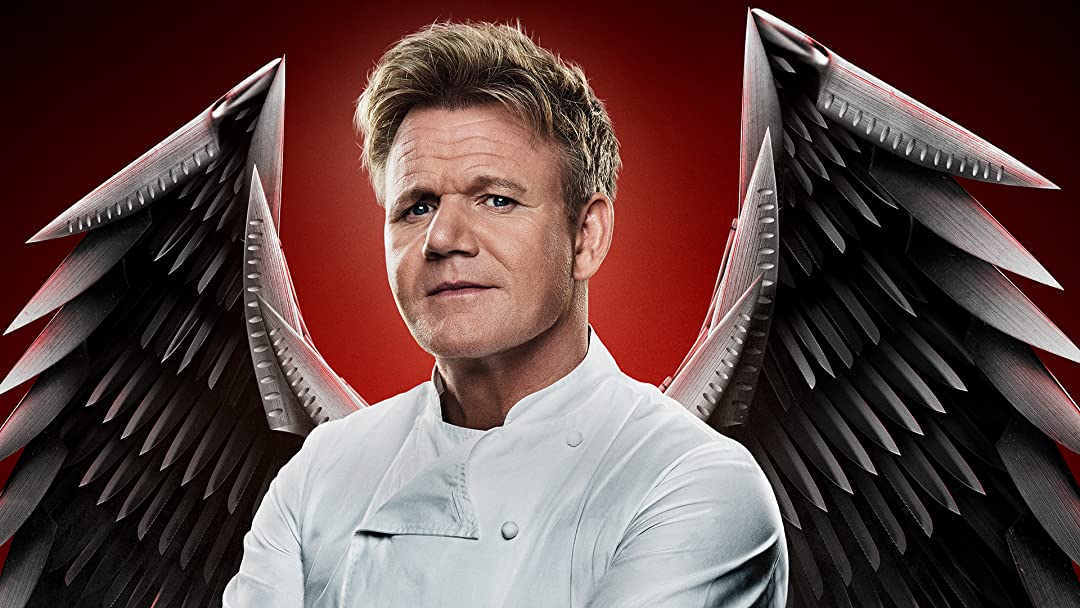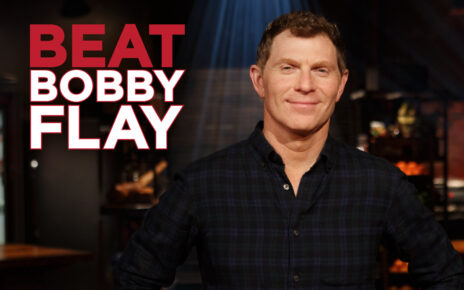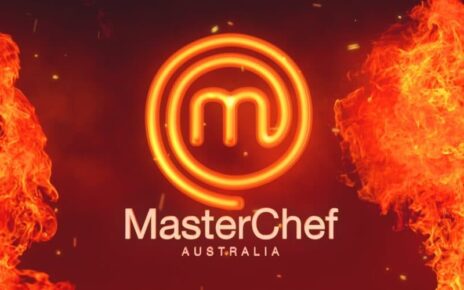Episode description
#HellishHangover
Challenge: In the first individual challenge as Black Jackets, the six remaining chefs were given 45 minutes to cook dishes that Ramsay would take photos of to have judged by in part by his 100 million social media followers. Ramsay and Michelin-star guest judge Kevin Meehan both judged the dishes on a scale of one to ten by presentation and taste. Ryan, Leigh, Dahmere, and Carmen all received 17 out of 20 possible points from Ramsay and Meehan, who criticized Sammi’s and Johnathan’s presentations. The social media followers ranked Leigh’s dish as their favorite, making her the challenge winner, with Carmen as the runner-up. Leigh chose to bring Carmen with her on the reward.
Reward/punishment: Leigh and Carmen got to go to the spa Muscle Lab to enjoy cryotherapy and a sauna, and then have lunch at the luxury hotel Langham. The other four chefs had to blanch and peel 100 pounds of almonds.
Service: This was the first Black Jacket dinner service, with Zedd sitting at the chef’s table. Also attending service were Kate Flannery, Mary Lynn Rajskub, Gavin Rossdale, and Bob the Drag Queen. Ryan only called seven appetizers for an eight-top, while Dahmere undercooked two lobster for the risotto, but quickly recovered. Thanks to Ryan and Sammi’s leadership, the appetizers went smoothly after that. Leigh and Carmen served raw New York strip, but they were able to recover. Jonathan made several mistakes on the garnish, and then undercooked sausage after dropping one on the ground. Dahmere served raw and overcooked salmon while the meat station served raw lamb, due to Carmen and Dahmere shouting conflicting times over each other. Leigh then mangled a Wellington, forcing Ramsay to temporarily stop the orders and show Leigh how to slice them correctly. At this point, a frustrated Ramsay ended service early with some diners not served, and demanded two chefs nominated for elimination.
Elimination: Dahmere and Leigh were nominated for underperforming on the fish and meat stations, respectively. Ramsay first eliminated Leigh for her repeated mistakes and lack of experience, but praised her improvement. He then eliminated Dahmere for being the worst performer of the night and not delegating when he needed help, but praised his passion and leadership abilities. Both Leigh and Dahmere received retrospective montages. After dismissing the final four chefs, Ramsay told Jonathan to regain his composure, and warned him to bounce back.
Ramsay’s comment: “Leigh needs more experience and Dahmere needs more finesse, but they both will make great head chefs someday. It’s just not today.”
Hell’s Kitchen Season 21
Hell’s Kitchen Season 22
Episode 01 | Episode 02 | Episode 03 | Episode 04 | Episode 05 | Episode 06 | Episode 07 | Episode 08 | Episode 09 | Episode 10 | Episode 11 | Episode 12 | Episode 13 | Episode 14 | Episode 15 | Episode 16
Hell’s Kitchen US Show Summary
The U.S. version of Hell’s Kitchen follows the format of the UK version though the show is recorded and not performed live, nor is there audience participation in the elimination of chefs. Each season brings twelve to twenty aspiring chefs to Hell’s Kitchen, a modified warehouse in Los Angeles that includes the restaurant, dual kitchen facilities, and a dormitory where the chefs reside while on the show. Gordon Ramsay breaks the chefs into two teams most often based on gender, with women on the red team, and men on the blue, and are given a chef’s jacket with labels of that color. The chefs compete in these teams, barring any reassignments by Ramsay, until only five or six chefs are left, which they are brought into a single common team wearing black-labeled jackets, though they now compete individually to be one of the final two. Each episode typically includes one challenge and one dinner service, following which a chef is eliminated from the game.
In challenges, the teams or individual chefs are tasked with a cooking challenge by Ramsay. The type of challenges are varied, ranging from ingredient preparation, meal preparation, taste tests, and other challenges. The first challenge of each season is a signature dish cookoff, giving the chefs the opportunity to show Ramsay their cooking. Each season typically includes one or more challenges that allows teams to construct several dishes either for a banquet to be held the next dinner service or as part of designing their own menus. Other challenges typically include a “taste it, make it” task where chefs must try to recreate a dish Ramsay has prepared by taste only, and a taste-test challenge where chefs identify ingredients without sight or sound. The winner of the challenge is either determined by a scoring system set for that challenge, or based on Ramsay’s and guest judges’ opinions. The winning team or chef is typically rewarded with an activity away from Hell’s Kitchen and other potential prizes, while the losing team or chefs are forced to do a menial task, such as cleaning the kitchens, preparing a specific ingredient for the dinner’s meal, or having to prepare the food for both kitchens.
For dinner services, the chefs are expected to work their station (such as meat, fish, or garnish) on the kitchen line to prepare food in coordination with their teammates and to Ramsay’s high standards for quality and presentation during a dinner service for about 100 guests (volunteers for the show), with each diner expecting to receive an appetizer, an entree, and a dessert. The chefs are given menus and recipe books by Ramsay to study and memorize, which include some of Ramsay’s more difficult plates including risotto and Beef Wellington, and are given a few hours before each service to prep their ingredients. They are also given silverware sets that they get to keep, regardless of their progress. Ramsay demands that all orders for one course for a table go out together, and will send back entire orders if one item is improperly prepared, such as being over- or undercooked or not seasoned correctly. While the chefs are in two teams, Ramsay is assisted by two of his trusted sous-chefs, each monitoring one of the kitchens who will also demand the same standards. The sous-chefs shift to helping to fill available positions once the chefs are on a single black team. One such service in this time period allows each chef to run the pass as part of a quality-control test (i.e. spotting mistakes that are sent up by either Ramsay or one of his sous-chefs).
Ramsay desires to complete every dinner service, but poor kitchen performance by one or both teams will cause him to close one or both sides of the kitchen early, and send the team(s) back to the dorms. Once the dinner service is complete, Ramsay determines which team (if not both) is the losing team and informs them to come up with chefs to be nominated for elimination. This may be a task assigned to the “best of the worst” on the team, or may be a group consensus. Ramsay regroups the teams and hears out the nominations from the losing team(s). After giving these nominees the chance to defend themselves, Ramsay selects one to hand over their jacket and “leave Hell’s Kitchen”, later symbolically placing that jacket on an empty sharp hook below a picture of that chef, in a row in his office; the hook pokes a hole in the jacket and ignites that chef’s picture signaling their departure. Ramsay is free to ignore these elimination rules if he sees fit. He has frequently eliminated chefs during the middle of the service if their performance is abysmal, or may override the provided nominations with his own selection. If an eliminated chef has performed exceptionally well, he may allow that chef to keep their jacket as a token of their success up to that point, if he sees fit. At the end of each episode, as he is seen heading back to his office to hang up the eliminated chef’s jacket, there is a voice-over of him explaining his reasons for eliminating that chef. Often chefs will be taken out of the competition for medical reasons or they may leave on their own free will; though the latter is not encouraged, their wishes are ultimately honored.
Once two chefs remain, they are each given the opportunity to develop their own menu and lead a brigade of former competitors through a full dinner service on their own. In some seasons, this has included the opportunity to decorate half of the Hell’s Kitchen restaurant to their liking. Ramsay will assure that all menu items meet his standards for high cuisine, and will oversee the service to make sure the high quality standards he expects are retained but otherwise does not get involved, allowing the two remaining chefs to demonstrate their ability to run the line to him. Ramsay will use his observations, those from the diners, and other sources to make a decision on who is the winning chef. This process is announced by having the two chefs stand at two different doors from his office, and telling them to turn the door handle and open it; only the door of the winning chef is unlocked. The winning chef receives numerous prizes including the opportunity to work as the head chef or executive chef at a restaurant of Ramsay’s choosing, as well as a cash prize.
[ajax_load_more post_type=”post” posts_per_page=”10″ post_format=”standard” orderby=”modified” placeholder=”true”]



